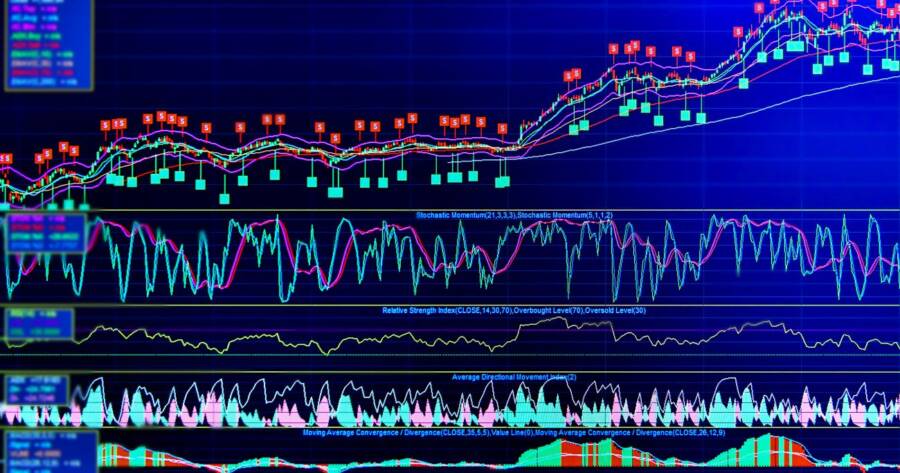Whether you are new to the world of stocks or are considering investing in stocks, this an alphabetical A to Z list of many basic stock terms. Complete with definitions, you will learn what these terms are that you will soon find yourself running into.
The stock market is not too difficult to understand and to succeed in once you get the hang of it. These terms will start you off with what you need to know when it comes to terms that are not common sense.
A for Active Share
This can more easily be termed as a share that is sold three or more times a week. This type of share is easily bought and sold.
An active share has frequent day by day dealings.
B for Booking Profit
This is when you make profit from a share that has gone up above it’s purchasing price.
C for Cum Dividend (CD)
Until the share has been declared XD, or no dividend, the buyer of this share is eligible to receive the dividend for the entire year before it was bought.
D for Depository Receipt (DR)
This is a tradable item that is valued in the same amount as a fixed number of shares, which typically goes on in overseas markets.
There are two different markets DR can be associated with. They are:
- American Depository Receipt (ADR), and;
- Global Depository Receipt (GDR).
This is known to be done mainly with the Indian overseas market.
E for Eligible Securities Shares
Banks will more than likely make their own rules when it comes to these shares, debentures, and bonds. These are usually shares that are used as collateral when it comes to bank loans.
F for Floating Stock
This is the number of shares of a company that is traded on the stock exchange. It usually has a fraction of the total number issued and outstanding.
G for Golden Share
This kind of share is a share that controls 51 percent or more of the voting rights of a company.
H for Hemline Theory
The theory that stock market prices go up as the hemlines of women’s dresses go up.
I for Investment Letter
When shares are privately placed, there is a written agreement between seller and buyer which stipulates that the shares are bought for investment purposes only. They cannot be resold publicly for short term gains.
J for Joint Holders Shares
Although all notices and dividends will be sent to the first holder only, a share can be held jointly by up to three different people at once.
When it comes time to sell this share, all three people would have to be present to sign the documents, not just the first holder. If the first holder passes away, the second holder will automatically become the beneficiary.
K for Kicker
This is an incentive to a buyer of a debt instrument that will come in the form of an attached equity warrant. This could also be called a sweetener.
L for Liquidation
A liquidation is considered to be a winding up of a company. This is usually done through a resolution passed by shareholders or bankruptcy once the purpose has been fulfilled.
M for Moving Average
This is the average for share prices during a specific period of time, whether it be a week, month, or year. This is done instead of posting daily fluctuations in the stock price.
N for Nervous Market Stock
This is referred to as reacting quickly to different economic or political events throughout our country, such as annual budgets unfavorable to industrial growth or price controls.
O for Option Interest
This is considered to be a bit different from exact interest. Exact interest runs 365 days per year, while option interest runs 360 days a year.
There can be a big difference in money when it comes in large amounts.
P for Put Call Ratios
This is said to be a ratio of the trading volume of put options to call options.
Q for Quantitative Analysis
This analysis is dependent solely on financial information and deals with financial securities.
R for Rule of 72
This is well known formula for calculating the number of years an investment will take at a compound rate of interest to double.
S for Stochastic
Also known as a random process. It means the process will likely change and differentiate throughout the process of the business.
T for Turnaround
This is when a company makes differences that are better for their company overall and their financial status.
U for Unsecured Debt
A loan that is not supported by any mortgage or repayment.
V for Volatile Shares
These are shares that are subject to high fluctuations in prices.
W for Wallflower Stocks
These are shares that are neglected by analysts and stockholders.
Y for Yield to Maturity
This is the calculation of the rate of return to any investor in the long run.
Z for Z Shares
This is the mutual fund shares of a class available to employees of the fund.
Conclusion
Now that you have learned some basic terms for the stock market, you are sure to go out there and start making your profit, and succeeding with stocks. Enjoy your journey as a shareholder!








